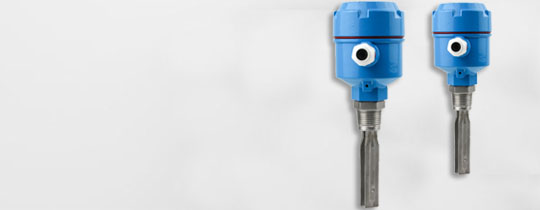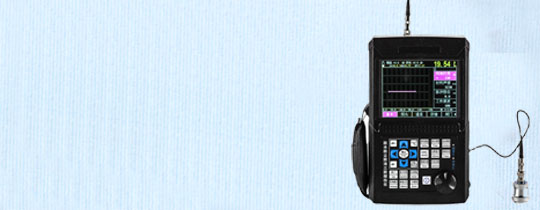
Classification of YQWJ-CMS/D1A Permanent Magnet Collision Safety Door Devices
YQWJ-CMS/D1A permanent magnet collision safety door device classificationShandong Zhuoxin's proximity switch detection distance: 120MMVoltage: DC 10-30V, AC 24-240V voltage optionalOutput: NPN, PNP, NPN+PNPStatus: NO normally open, NC normally closed, NO+NC normally open+normally closedOuter diameter:Φ 4 M5、M8、M12、M18、M20、M24、M30、M34、M35、M38、M40、M48, There are many specifications for square sizes, please call us for details: additional requirements can be provided according to
- ZHUOXIN
- 24v-110v-220v-380v
- IP65
- TT, Paypal, Credit card, Western union
- +86-15163766288
- YQWJ-CMS/D1A permanent magnet collision safety door device classificationShandong Zhuoxin's proximity switch detection distance: 120MMVoltage: DC 10-30V, AC 24-240V voltage optionalOutput: NPN, PNP, NPN+PNPStatus: NO normally open, NC normally closed, NO+NC normally open+normally closedOuter diameter:Φ 4 M5、M8、M12、M18、M20、M24、M30、M34、M35、M38、M40、M48, There are many specifications for square sizes, please call us for details: additional requirements can be provided according to
Description

YQWJ-CMS/D1A Permanent Magnet Collision Safety Door Device Classification 1. Detailed Introduction: YQWJ-CMS/D1A is a device that generates electromagnetic waves when powered on. A conductive winding that matches its power is wound around the outside of the iron core, and this coil with current is magnetic like a magnet. It is also called a permanent magnet collision type safety door device. We usually make it in the shape of a bar or hoof to make the iron core more easily magnetized. In addition, in order to immediately demagnetize the permanent magnet collision safety door device after power failure, we often use soft iron or silicon steel materials with faster demagnetization to make it. This type of permanent magnet collision safety door device has magnetism when powered on, and the magnetism disappears after power failure. The permanent magnet collision type safety door device has a wide range of applications in our daily life, and its invention has greatly increased the power of the generator. 2、 Performance points: The permanent magnet collision safety door device has many points: whether the magnetism of the permanent magnet collision safety door device can be controlled by on/off current; The size of magnetism can be controlled by the strength of the current or the number of turns in the coil; The magnetic magnitude can also be controlled by changing the resistance to control the current size; Its magnetic poles can be controlled by changing the direction of the current, and so on. That is, the strength of magnetism can be changed, the presence or absence of magnetism can be controlled, the direction of magnetic poles can be changed, and magnetism can disappear due to the disappearance of current. The permanent magnet collision safety door device is an application of the current magnetic effect (electrogenerated magnetism), closely related to daily life, such as electromagnetic relays, electromagnetic cranes, maglev trains, electronic door locks, intelligent channel turns, electromagnetic flow meters, etc. 3、 Working principle: When an iron core is inserted inside the energized solenoid, it is magnetized by the magnetic field of the energized solenoid. The magnetized iron core also becomes a magnet, which greatly enhances the magnetism of the solenoid due to the superposition of two magnetic fields. In order to enhance the magnetism of the permanent magnet collision safety door device, the iron core is usually made into a shoe shape. But it is important to note that the winding direction of the coil on the hoof shaped iron core is opposite, with one side clockwise and the other side facing counterclockwise. If the winding direction is the same, the magnetization effect of the two coils on the iron core will cancel out each other, making the iron core non magnetic. In addition, the iron core of the permanent magnet collision safety door device is made of soft iron, not steel. Otherwise, once the steel is magnetized, it will maintain magnetism for a long time and cannot demagnetize. The strength of its magnetism cannot be controlled by the magnitude of the current, and it will lose the point that the permanent magnet collision safety door device should have. The permanent magnet collision type safety door device is a device that can generate magnetic force by passing current. It is a non permanent magnet and can easily activate or eliminate its magnetism. For example, a large crane uses a permanent magnet collision safety door device to lift abandoned vehicles. When current passes through a wire, a magnetic field is generated around the wire. By applying this property, when current passes through a solenoid, a uniform magnetic field is created within the solenoid. If ferromagnetic material is placed in the center of the solenoid, it will be magnetized and greatly enhance the magnetic field. Generally speaking, the magnetic field generated by the permanent magnet collision type safety door device is related to the magnitude of the current, the number of coil turns, and the ferromagnet in the device. When designing a permanent magnet collision safety door device, attention will be paid to the distribution of coils and the selection of ferromagnets, and the current size will be used to control the magnetic field. Due to the resistance of the coil material, the magnetic field generated by the permanent magnet collision type safety door device is limited. However, with the discovery and application of superconductors, it will exceed the existing limit. YQWJ-CMS/D1A Permanent Magnet Collision Safety Door Device Classification 4. Product Classification: Classified by Current 1. AC Permanent Magnet Collision Safety Door Device 2. DC Permanent Magnet Collision Safety Door Device Classified by Purpose 1. Braking Permanent Magnet Collision Safety Door Device: Used in electrical transmission devices for mechanical braking of electric motors to achieve accurate and rapid parking. Common models include MZD1 (single-phase) and MZS1 (three-phase) series. 2. Permanent magnet collision safety door device for lifting: used as a lifting device to lift magnetic materials such as steel and iron sand, or as an electromagnetic manipulator to hold magnetic materials such as steel. 3. Permanent magnet collision safety door device for valves: uses magnetic force to push the magnetic valve, thereby achieving the purpose of opening, closing or reversing the valve port. fourTraction permanent magnet collision safety door device: mainly used for traction mechanical devices to perform automatic control tasks. 5、 Direction determination: The magnetic field direction of the permanent magnet collision safety door device can be determined using the Ampere rule. The Ampere rule is a rule that represents the relationship between the direction of the magnetic induction line of the current and the magnetic field excited by the current, also known as the right-hand spiral rule. (1) The Ampere Rule in a Live Wire (Ampere Rule 1): Hold the live wire with your right hand, pointing your thumb in the direction of the current and your four fingers in the direction of the magnetic field around the live wire. (2) Ampere rule in energized solenoid (Ampere rule 2): Hold the energized solenoid with your right hand and bend your four fingers in the same direction as the current. The end pointed to by your thumb is the N-pole of the energized solenoid. Proximity switch sensors are commonly used in many door systems to detect the opening and closing of doors. Generally, two proximity switches are used to detect the opening and closing of doors. In addition, photoelectric switches are also widely used in systems, and all gate technologies will apply more sensor technologies. It is not difficult to see who is the strong player in the market who applies sensor technology more. Intelligence and automation will rely closely on sensors. LJM8T-1Z/PKS, LJM8T-1Z/PHS, LJM8T-1Z/KS, LJM8T-1Z/HS, LJM8T-1J/KS, LJM8A-2Z/NKS, LJM8A-2Z/NHS, LJM8A-2Z/PKS, LJM8A-2Z/PHS, LJM8A-2Z/KS, LJM8A-2Z/HS, LJM8A-2J/KS, LJM10T-1Z/NKS, LJM10T-1Z/NHS, LJM10T-1Z/PKS LJM10T-1Z/PHS, LJM10T-1Z/KS, LJM10T-1Z/HS, LJM10T-1J/KS, LJM10A-2Z/NKS, LJM10A-2Z/NHS, LJM10A-2Z/PKS With the rapid development of the subway industry and the frequent occurrence of subway traffic accidents, subway doors will be increasingly used on subway platforms. Sensors, as instruments for automated and intelligent equipment, proximity switch sensors will be widely used in various technological applications, and subway accidents will be reduced in the application of sensors. Rope switch model: RTLX9100 380V proximity switch XS630B1MAL2; 220V; 5-300mA proximity switch E3F-S30 NPN proximity switch LJ30A3-15-J/Z rope switch model: HSBH-102C-SS-15-1200 stainless steel material AC220V 3A rope switch model: HSL-102C-SS stainless steel 220V 2A blocking switch model: ZPRL-100 type 220V 3A proximity switch name: magnetic induction proximity switch model: PMSCC-JYSK01 8V 1A temperature resistant proximity switch; B-NGWG; 180 ℃ Temperature resistant proximity switch NI20-M30-FZ3X/S120Ni15-M30-AP6X/S120 Temperature resistant proximity switch Ni15H-M30-OP6/T120 Temperature resistant proximity switch deviation switch PP-K2/J Shanghai pull rope switch model: B-T2 Shanghai deviation switch model: HQPK-PXB stainless steel two-stage deviation switch 10 ⪚ -45 ⪚ 220V 1

Tags
Get the latest price? We'll respond as soon as possible(within 12 hours)

















